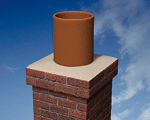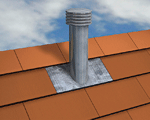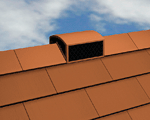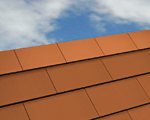What type of fireplace can I have?
When you start your search for a new Fireplace one of the most vital starting points is identifying what you can and can't have. If you are considering a solid fuel or gas fire the chimney or flue in your house will normally determine what kind of fire you can choose. You should always engage a qualified Gas Safe Registered or HETAS Registered (solid fuel) engineer to inspect your property to determine what is required and carry out installation.
What is a flue? A flue is a duct, pipe, or opening in a chimney for conveying waste gases from a fireplace into the external atmosphere. Different fires are compatible with different flues, with the depth of your flue determining which fire will best fit your home.
The best way to identify what type of flue you have is by simply looking at your roof and seeing what kind of outlet it has. Always make sure to check the product specifications and ask a qualified professional before making a purchase .
The following illustrations and descriptions should give you a good idea of how to identify your flue type.
Class 1 Chimney Type

Common in older houses, earlier than 1960. The class 1 chimney is identifiable by 7" (180mm) or greater diameter flue. The existing chimney must be structurally sound, please check before the installation of a new fireplace.
Class 1 chimneys as long as they are fault free are suitable for all fireplace types.
Class 2 Chimney Type

Either an older house where the existing chimney has been lined by a propietary steel flue or a newer house with a steel flue built in. This chimney type is identifiable by a 5" (130mm) diameter flue and a steel flue terminal.
Class 2 chimneys are unfortunately not suitable for solid fuel fires, but you can use gas.
Pre-Cast Flue Chimney Type

Modern houses generally later than 1960 often have a pre-cast concrete chimney system, identifiable by a rectangular box section flue and a terminal, as illustrated in the picture.
Pre-cast flues are again not suitable for solid fuel fires and can only use specific gas fires. However the range of gas fires has increased hugely over the past few years.
No Chimney

Modern houses often have no chimney. You can use a modern decorative electric fire with up to 2kW heat output, or a gas powerflue fire.
